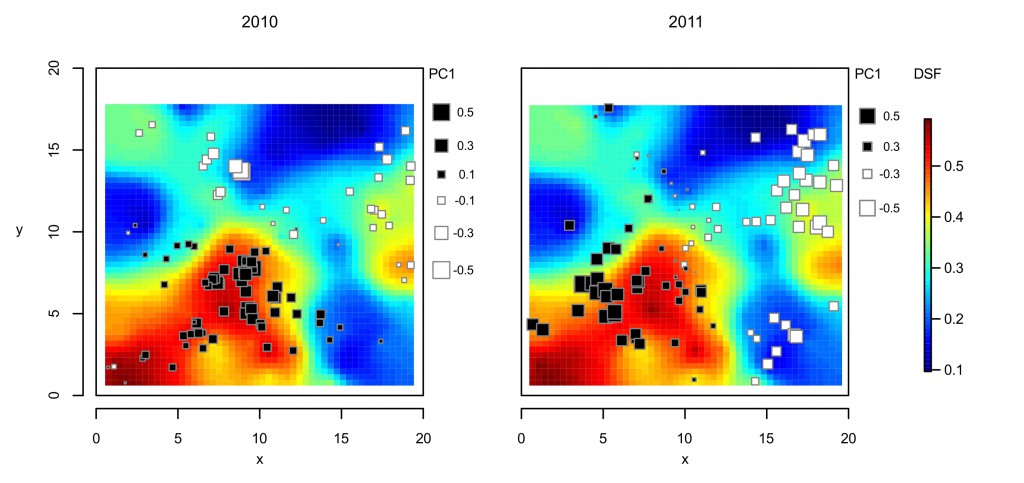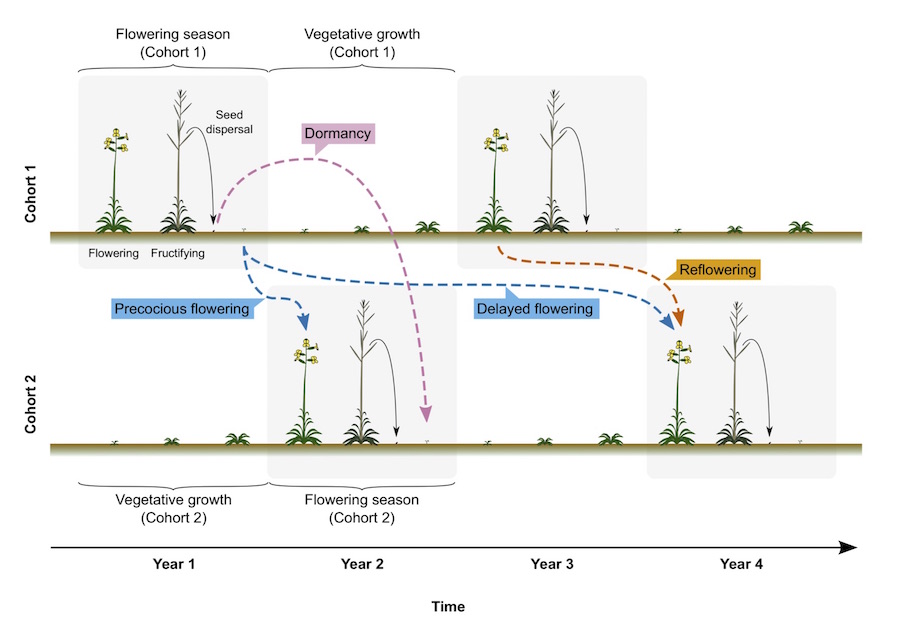We have just published a paper in Scientific Reports about the maintenance of the fine scale (< 20m) genetic structure in Erysimum mediohispanicum.
 We have explored the maintenance of this structure between two consecutive flowering cohorts of this biennial plant and found that inter-annual migrants, in combination with limited seed dispersal and environmental heterogeneity, play a major role in shaping and maintaining the fine-scale spatial genetic structure.
We have explored the maintenance of this structure between two consecutive flowering cohorts of this biennial plant and found that inter-annual migrants, in combination with limited seed dispersal and environmental heterogeneity, play a major role in shaping and maintaining the fine-scale spatial genetic structure.
Within plant populations, space-restricted gene movement, together with environmental heterogeneity, can result in a spatial variation in gene frequencies. In biennial plants, inter-annual owering migrants can homogenize gene frequencies between consecutive cohorts. However, the actual impact of these migrants on spatial genetic variation remains unexplored. Here, we used 10 nuclear microsatellite and one plastid genetic marker to characterize the spatial genetic structure within two consecutive cohorts in a population of the biennial plant Erysimum mediohispanicum (Brassicaceae).
We explored the maintenance of this structure between consecutive flowering cohorts at different levels of complexity, and investigated landscape effects on gene ow. We found that cohorts were not genetically differentiated and showed a spatial genetic structure de ned by a negative genetic- spatial correlation at ne scale that varied in intensity with compass directions. This spatial genetic structure was maintained when comparing plants from different cohorts. Additionally, genotypes were consistently associated with environmental factors such as light availability and soil composition, but to a lesser extent compared with the spatial autocorrelation. We conclude that inter-annual migrants, in combination with limited seed dispersal and environmental heterogeneity, play a major role in shaping and maintaining the spatial genetic structure among cohorts in this biennial plant.
